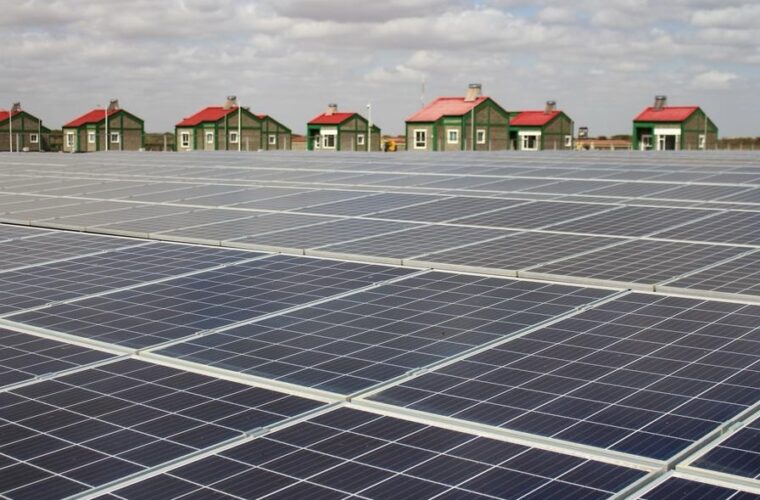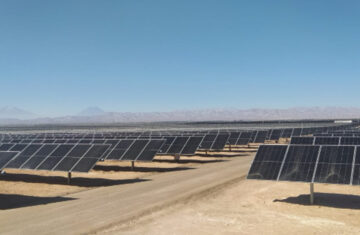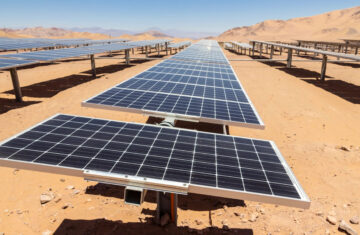A bright future powered by a green transition is in sight with the growing availability of reasonably priced Chinese clean and renewable energy products and technologies in Africa.
Many isolated African villages are completely dark as dusk approaches, with only kerosene lamps and candles to provide light. Frequent power outages disrupt daily life even in African metropolises that are connected to the electrical grid.
Even though Africa has a vast amount of renewable energy resources, 600 million people do not have access to electricity. However, a bright future propelled by a green transition is in sight with the growing availability of low-cost Chinese clean and renewable energy products and technologies in Africa.
ACCESSIBLE TO ALL
Rich renewable energy resources, including wind and solar energy, are abundant in Africa. With so much sunlight, the Sahara Desert is a great place to grow the photovoltaic industry, and Africa’s long coastline makes it an ideal place to develop offshore wind energy.
Photovoltaic panels are used in some isolated African villages to create small solar power plants that supply neighboring homes with electricity. Despite their modest size, these stations have greatly enhanced the quality of life for locals.
Families are able to boil water and cook while children can read in the dark. Some villages have increased economic activity by using the lighting.
The Energy and Petroleum Regulatory Authority estimates that renewable energy sources like geothermal, hydro, solar, and wind power account for about 87% of Kenya’s total electricity production.
According to Hannington Gochi, a specialist in renewable energy at Kenya’s Rural Electrification and Renewable Energy Corporation, the Garissa Solar Power Plant, built by a Chinese company, is gradually raising living standards and productivity in the country’s northern region. It has been connected to Kenya’s national grid. The 55 megawatt facility is the biggest solar power plant in East and Central Africa that is connected to the grid.
In the past, Elizabeth Wanjiku, the owner of a food stand in Garissa, northeastern Kenya, said she had to rely on generators to run her operation, particularly to power the refrigerator where she kept her food fresh. She told Xinhua, “We are experiencing fewer power blackouts and enjoying the benefits of a more reliable electricity supply now that the town is connected to the national grid thanks to the solar plant.”
These kinds of programs, which are frequently backed by foreign allies like China, have encouraging outcomes. According to Zimbabwean economist Brains Muchemwa, Africa has greatly profited from China’s burgeoning green energy sector by receiving cheap green energy goods like solar panels and batteries.
In a recent interview, Muchemwa told Xinhua that despite criticism from the West of China’s expanding green industry production capacity, many Africans’ lives have been significantly improved by the new green energy products.
China declared at the inaugural African Climate Summit in September 2023 that it would fund solar projects in areas not connected to main electrical grids with 100 million yuan (roughly 14 million US dollars) as part of the “Africa Solar Belt” initiative. The program aims to support at least 50,000 families.
A project to encourage the development of more creative, small-scale clean energy projects between China and Africa was introduced at the 28th Conference of the Parties to the United Nations Framework Convention on Climate Change.
Small and medium-sized solar projects in developing areas of Africa are the project’s main focus. According to Marco Lambertini, a special envoy of the World Wide Fund for Nature, small-scale infrastructure, like microgrids, can constitute reasonable energy solutions in rural areas of Africa and many other isolated regions worldwide.
PARTNER IN GREEN TRANSITION
The greatest number of developing nations are found in Africa. For the purpose of establishing a global ecosystem for sustainable development, its green transition must be successful.
In a comparatively short amount of time, many African nations have made notable progress toward a transition to green energy. In their Nationally Determined Contributions, more than seventy percent of African nations have made clean energy a priority. China has been a major contributor to this change by offering equipment at reasonable prices and utilizing its knowledge of renewable technologies.
More than 100 joint Chinese-African initiatives under the auspices of the Forum on China-Africa Cooperation, ranging from Kenya’s Garissa Solar Power Plant—the continent’s first sizable solar power plant that harnesses its abundant solar resources—to South Africa’s De Aar Wind Farm, are supporting Africa’s green transition.
These collaborations, according to Rhoda Wachira, head of the energy unit in the UNEP’s Africa office, are essential because they give African nations access to cutting-edge technology and Chinese funding, both of which are necessary for a successful energy transition.
Yang Baorong, a researcher at the China-Africa Institute, echoed this viewpoint, stating that China makes high-quality and reasonably priced green energy products and technologies available to more Africans by supplying them from China.
According to Yang, this kind of cooperation in green energy can turn Africa’s enormous resource potential into actual economic growth.
“As Africa seeks high-grade green energy, China is a dependable partner,” Yang stated. “China and Africa can work together to overcome the challenges posed by climate change and progress toward a more sustainable, prosperous, and cleaner future.”



